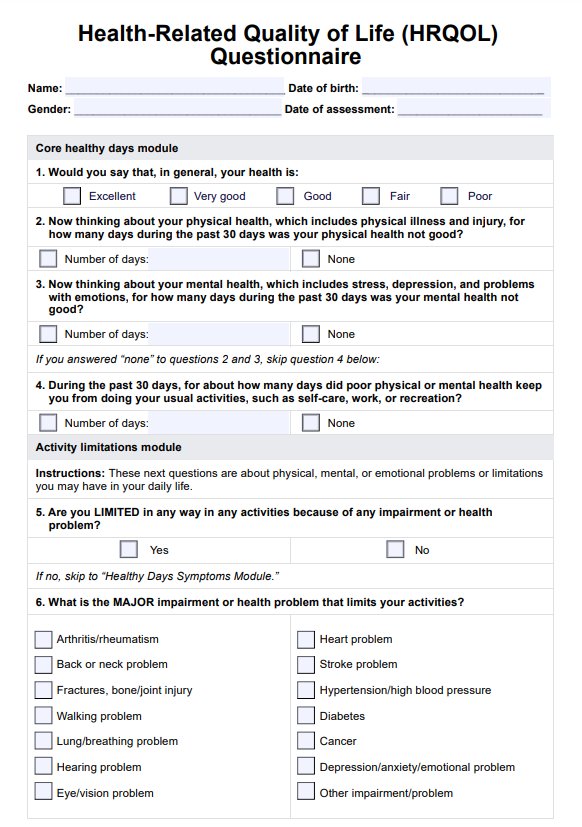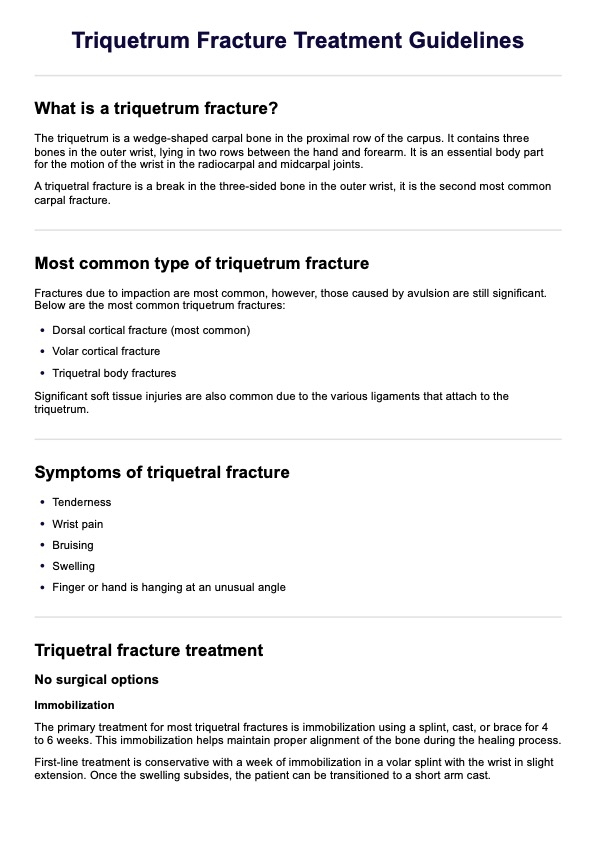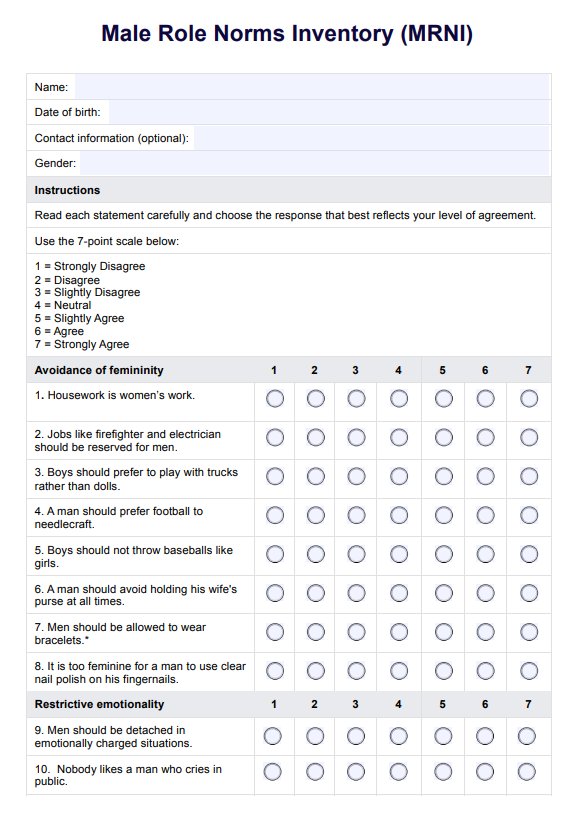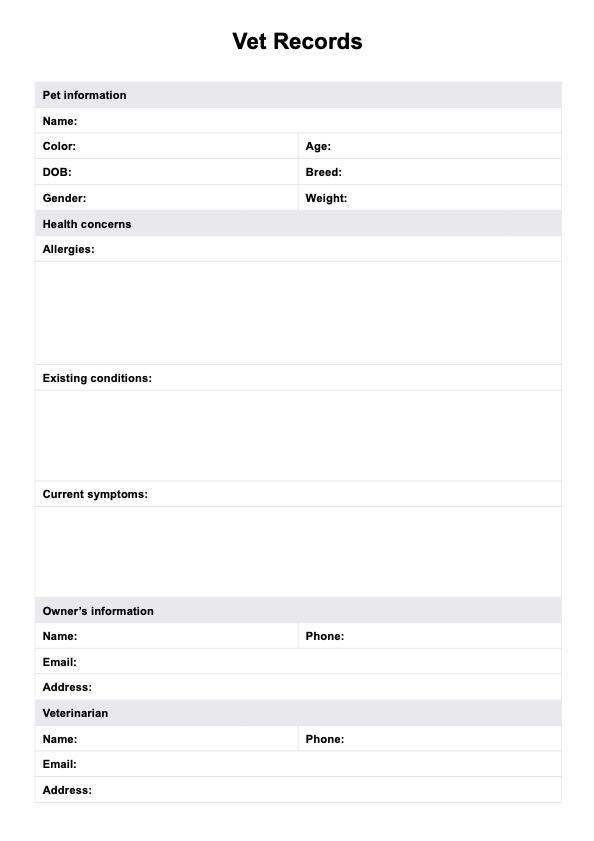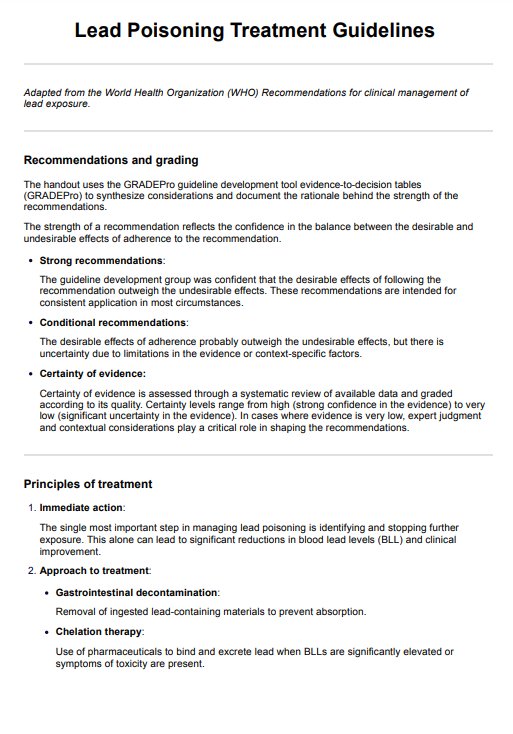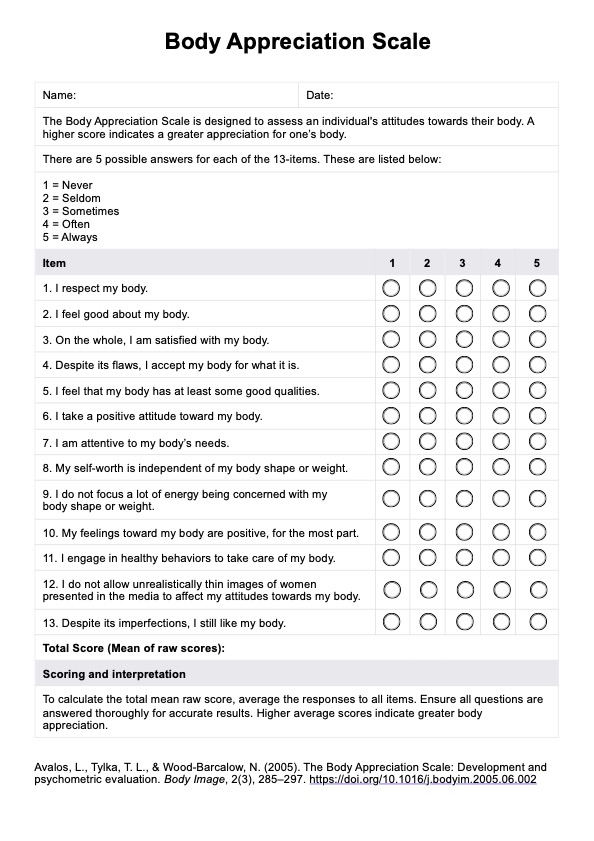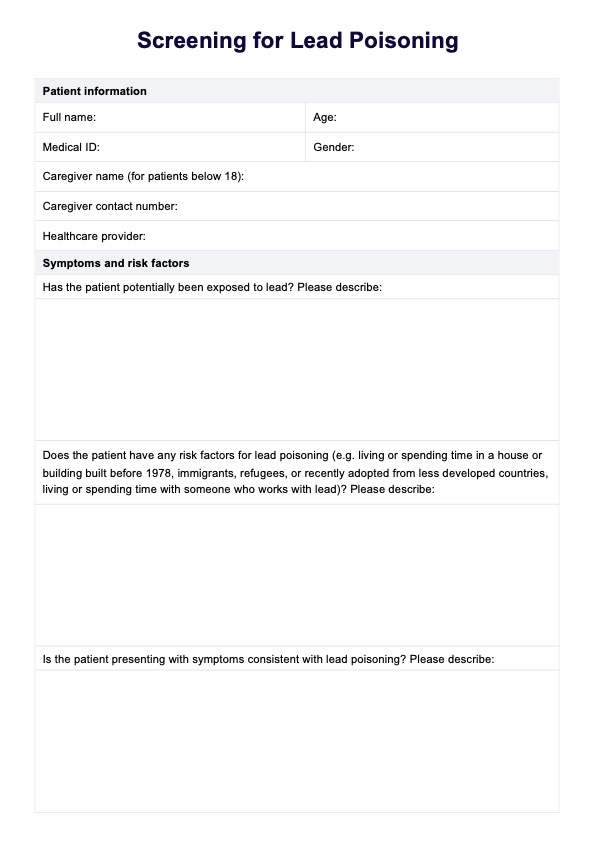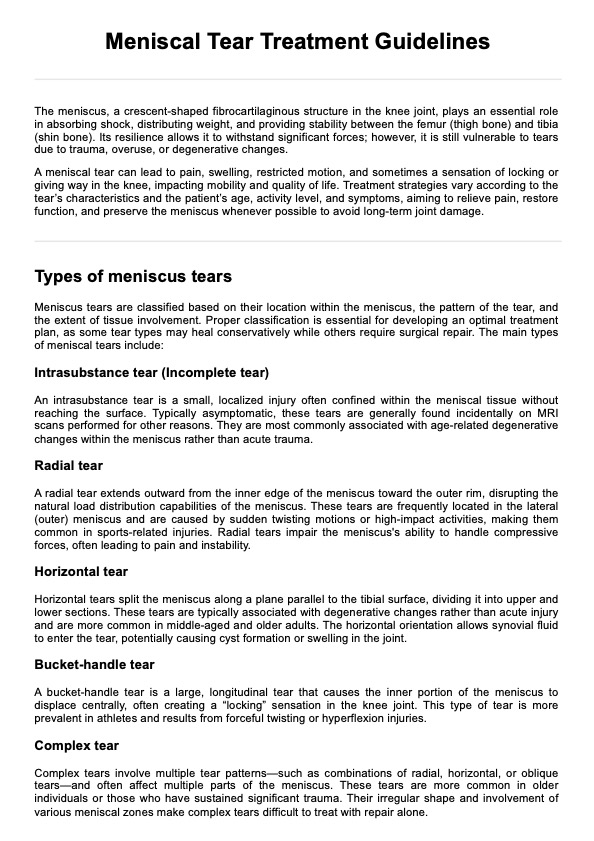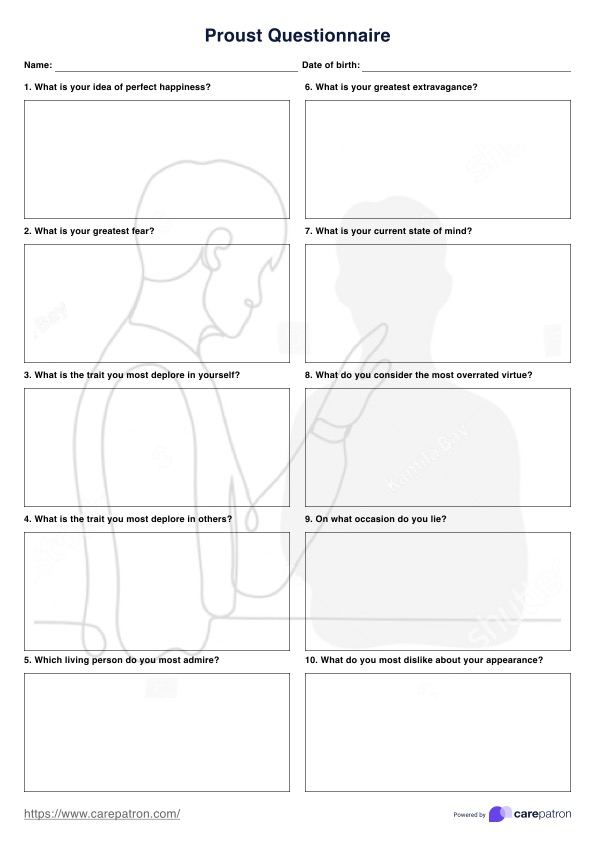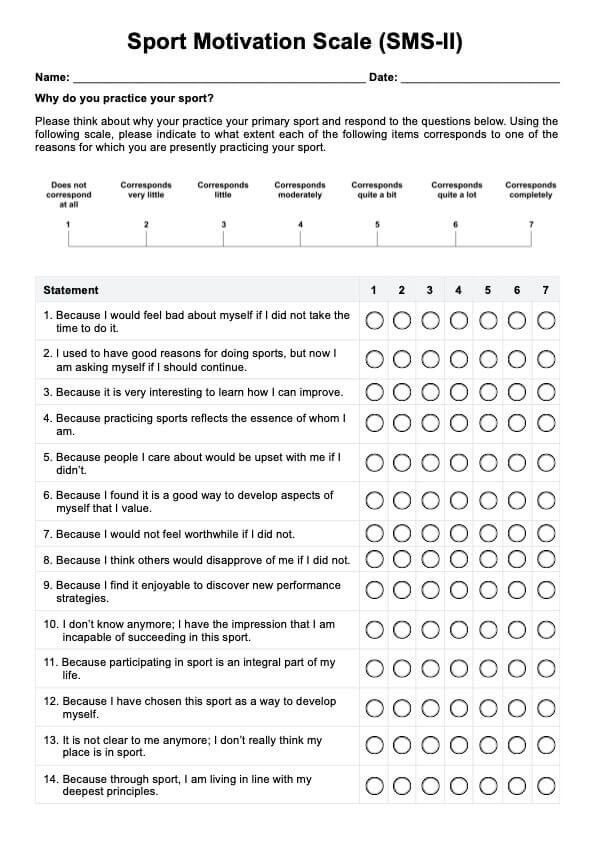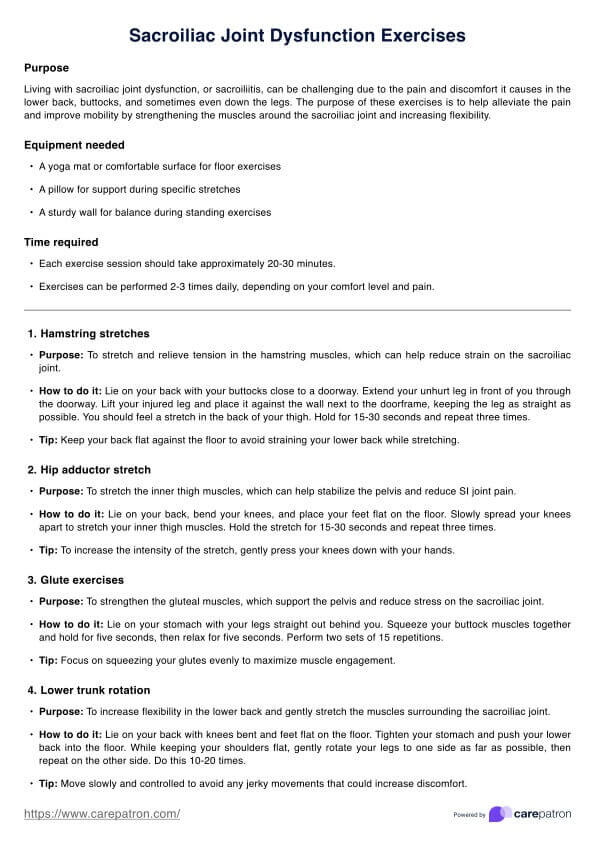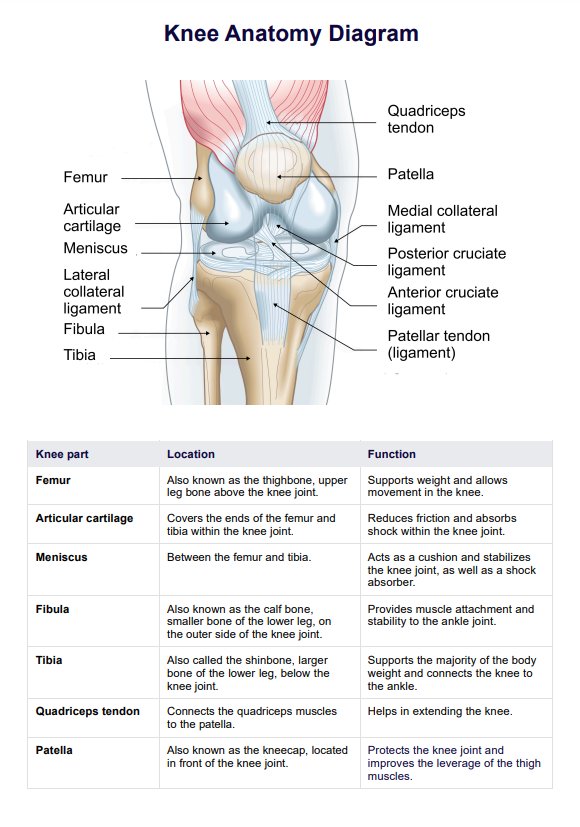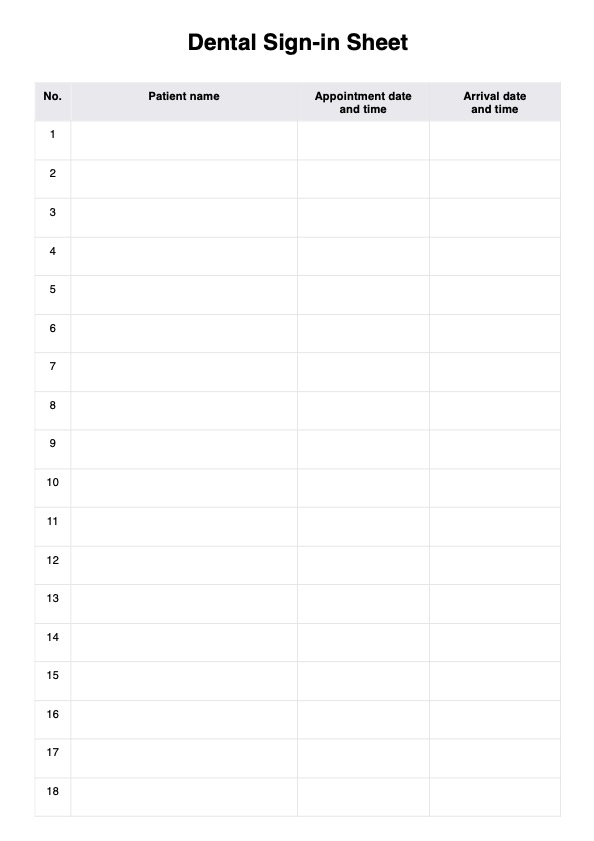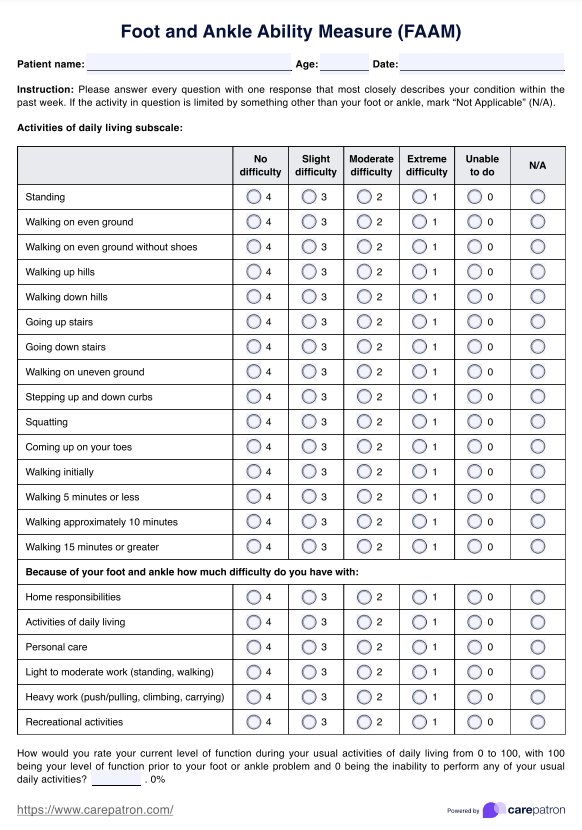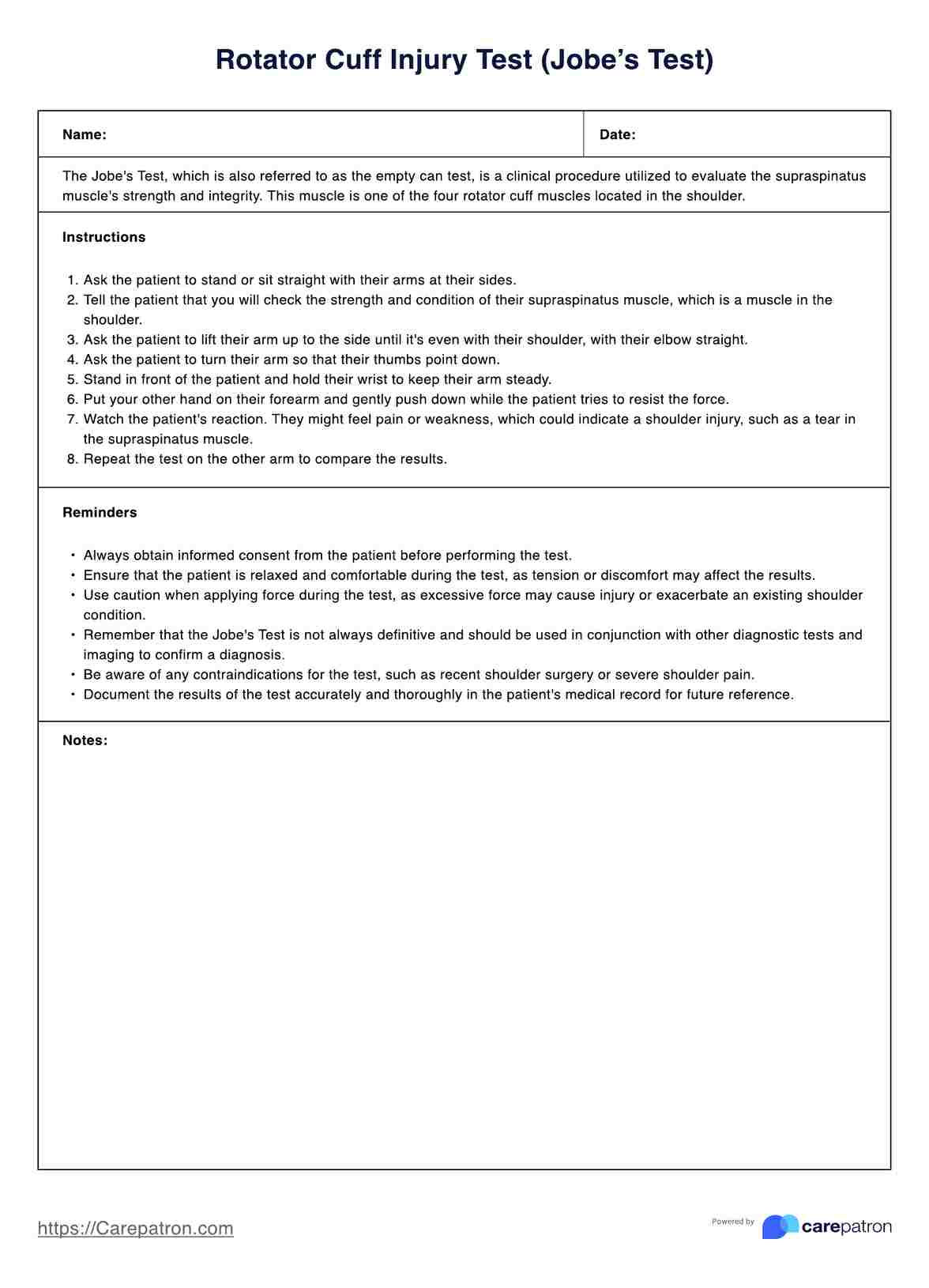Scoliosis Screening Template
Looking for a scoliosis screening template? Download our free PDF template and access an example to effectively screen for scoliosis.


What is scoliosis?
Scoliosis is a medical condition characterized by an abnormal spine curvature, often presenting as a sideways curvature that may resemble an "S" or "C" shape. This condition can develop at any age, but it most commonly appears during the growth spurt just before puberty. While most scoliosis cases are mild, severe instances can lead to health problems and affect the overall quality of life.
The precise cause of scoliosis is not always known and can vary. Structural scoliosis, typically diagnosed during adolescence, is often related to genetics and can run in families. On the other hand, nonstructural scoliosis may result from temporary factors such as muscle spasms or leg length discrepancies.
Initial detection and intervention play a crucial role in managing scoliosis effectively. This is where the significance of a scoliosis screening template becomes evident. A screening template is a systematic tool to assess the spine's alignment and identify potential signs of scoliosis at an early stage.
Why Scoliosis Screening Templates matter?
- Early intervention: Detecting scoliosis early allows for timely intervention, which may involve conservative measures like physical therapy, bracing, or, in severe cases, surgical correction.
- Prevention of complications: Severe untreated scoliosis can lead to complications such as chronic pain, respiratory issues, and spinal deformities. Regular screenings using a template help prevent these complications by enabling early diagnosis and management.
- Cost-effective healthcare: Implementing scoliosis screenings through a template is a cost-effective approach. It minimizes the need for extensive diagnostic procedures by pinpointing potential issues early on, reducing healthcare costs for both individuals and the healthcare system.
Creating a scoliosis screening template is a proactive step towards maintaining spinal health and ensuring that individuals with scoliosis receive appropriate care promptly. In the following sections, we will delve into the essential components of an effective scoliosis screening template and guide you through the process of creating one.
Scoliosis Screening Template
Scoliosis Screening Template Example
Scoliosis signs and symptoms
Scoliosis can manifest through various signs and symptoms, and understanding these indicators is crucial for initial detection and intervention. The following are key signs and symptoms associated with scoliosis:
Asymmetry in shoulder height or position
One of the early visual cues for scoliosis is a noticeable asymmetry in shoulder height or position. A person with scoliosis may exhibit uneven shoulders when viewed from the front.
Uneven waist or hips
Scoliosis can lead to an imbalance in the hips or waist, causing one side to appear higher or more prominent than the other.
Spinal curve or rotation
A visible curve or rotation of the spine is a hallmark symptom of scoliosis. When observing an individual from the side, the spine may display an "S" or "C" shape.
Clothes fitting irregularities
Clothes may hang unevenly on an individual with scoliosis due to the curvature of the spine, particularly noticeable in how pants or skirts drape.
Back pain or discomfort
While not all individuals with scoliosis experience pain, some may report discomfort or pain in the back. This symptom becomes more prominent in cases of severe curvature.
Other screening tests and a scoliosis exam are instrumental in identifying scoliosis at an early stage. The Scoliosis Research Society (SRS) emphasizes the importance of regular screenings, especially during adolescence, when the condition often develops.
Adolescent Idiopathic Scoliosis (AIS)
AIS is the most common type of scoliosis and typically appears during adolescence. Early detection of AIS is critical for effective management and preventing progression.
Importance of early detection
Detecting idiopathic scoliosis early significantly improves treatment and long term health outcomes. Timely intervention, often through non-invasive methods, can help manage the condition and prevent further progression.
Understanding these signs and symptoms and regular screenings using a well-designed scoliosis screening template is vital for identifying scoliosis in its early stages. Some of America's scoliosis screening programs, including clinically nonsignificant scoliosis, can detect early signs.
Screening for scoliosis: clinical summary
Scoliosis screening plays a pivotal role in the early detection and management of spinal curvature abnormalities.
A systematic approach to screening is essential, and various currently available screening tests have been developed to identify potential cases of scoliosis.
The following clinical summary provides insights into effective screening methodologies and the importance of systematic evidence reviews.
Screening tests for scoliosis
Several screening tests are commonly employed to identify scoliosis, to detect spinal curvature at its earliest stages. These currently available screening tests are often conducted during routine physical examinations, especially for adolescents.
A primary focus is on assessing the spine's alignment and identifying any asymmetries or irregularities.
The Pediatric Orthopedic Society is a key authority in guiding the development of effective scoliosis screening protocols. Their recommendations emphasize the importance of early detection and the implementation of standardized screening procedures, especially in pediatric populations.
Systematic evidence review
The effectiveness of scoliosis screening protocols is continually evaluated through systematic evidence reviews. These reviews analyze the existing body of research to ensure that screening methods are evidence-based and up-to-date.
This rigorous process helps refine and enhance screening guidelines, ensuring that healthcare professionals utilize the most reliable and accurate methods.
Benefits of systematic screening
- Early identification: Systematic screening allows for the early identification of scoliosis cases, enabling timely intervention and management.
- Resource optimization: By employing evidence-based screening methods, healthcare resources are optimized, and unnecessary diagnostic procedures can be minimized.
- Consistent standards: Standardized screening protocols, informed by systematic evidence reviews, promote consistency in scoliosis detection across healthcare settings.
Incorporating these systematic approaches into scoliosis screening is essential for ensuring accuracy and reliability. The systematic evidence review process keeps screening protocols aligned with the latest advancements in medical knowledge.
Scoliosis Screening: what to expect
When undergoing a scoliosis screening, individuals can anticipate a straightforward and non-invasive examination to identify any signs of abnormal spinal curvature.
Primarily conducted during routine check-ups, especially for adolescents, scoliosis screening is designed to detect conditions like idiopathic scoliosis, a common form of spinal curvature with no apparent cause.
During the screening, a healthcare professional will assess the spine's alignment by observing the individual's posture. The examination may involve specific maneuvers, such as having the person bend forward test to evaluate the symmetry of the back.
This allows for identifying any asymmetries or irregularities that could indicate the presence of scoliosis.
It's important to note that a scoliosis screening exam is not a diagnostic procedure but serves as an initial step in identifying potential cases. If an abnormality is detected during the screening for scoliosis, further diagnostic screening tests may be recommended to confirm the presence of scoliosis and determine its severity.
Initial detection through routine screenings is key to prompt intervention and effective management of scoliosis.
In summary, individuals undergoing a scoliosis screening can expect a quick and non-intrusive examination focused on assessing spinal alignment. This proactive approach to screening for scoliosis aids in the early identification of conditions like idiopathic scoliosis, allowing for timely intervention and minimizing the impact of unusual spinal curvature.
Benefits of early detection and intervention
Early detection and intervention are paramount in effectively managing scoliosis, a condition characterized by unusual spinal curvature. Timely identification of scoliosis not only facilitates prompt medical attention but also significantly improves health outcomes.
Below are key benefits associated with initial detection and intervention, supported by systematic reviews and clinical effectiveness studies.
Minimizing progression with prompt intervention
Initial detection enables healthcare professionals to implement interventions promptly, often minimizing the progression of scoliosis. Conservative measures, such as physical therapy or bracing, may be highly effective when applied early in the course of the condition, preventing the development of severe spinal deformities.
Improved quality of life
Identifying and addressing scoliosis in its early stages contribute to an improved quality of life for affected individuals. Early intervention not only mitigates physical discomfort but also helps in maintaining a healthy posture and overall well-being.
Reduced need for invasive treatments
In cases where scoliosis progresses undetected, more invasive treatments, such as surgical correction and orthopaedic and rehabilitation treatment, may become necessary. Initial detection allows for less invasive interventions, reducing the need for extensive surgical procedures and associated risks.
Informed decision-making through systematic reviews
Systematic reviews by reputable organizations, such as the Pediatric Orthopaedic Society, consistently highlight the benefits of early scoliosis detection.
These reviews provide healthcare professionals with evidence-based insights, guiding informed decision-making in diagnosing and managing scoliosis.
United States Preventive Services Task Force (USPSTF) assessment
The United States Preventive Services Task Force (USPSTF) plays a crucial role in evaluating the evidence for various preventive healthcare measures, including screening for conditions such as scoliosis. The USPSTF assesses the available scientific evidence to provide recommendations that guide healthcare practitioners and policymakers in delivering effective preventive care.
In its evaluation of scoliosis screening, the USPSTF found inadequate evidence to assess the benefits and harms of routine screening for scoliosis in asymptomatic adolescents. This finding implies that, based on the available evidence, the task force could not conclusively determine whether the benefits of routine screening outweigh the potential harms in this population.
It's important to note that the USPSTF's assessment does not negate the significance of diagnosing scoliosis and addressing spinal curvature abnormalities. Instead, it emphasizes further research to establish the most effective screening strategies, particularly in populations without symptoms.
Healthcare providers may still consider scoliosis screening based on clinical judgment for individuals with several spinal curvature risk factors or those exhibiting signs and symptoms.
In cases where there is a family history of scoliosis, or an adolescent presents with noticeable asymmetries, the USPSTF found adequate evidence to support the effectiveness of screening in identifying mild scoliosis. This helped in curating an accurate diagnostic criterion for scoliosis screening.
Healthcare practitioners should consider the USPSTF's assessment when considering scoliosis screening protocols, especially in asymptomatic populations.
As research advances and more evidence becomes available, recommendations may evolve to provide clearer guidelines for identifying and managing scoliosis at its various stages.
Accuracy of screening tests
Accurate screening tests are crucial for the initial detection of scoliosis, especially in populations vulnerable to conditions such as adolescent idiopathic scoliosis. The accuracy of screening tests is a key consideration, and various methods are employed to identify potential cases of spinal curvature.
Two common screening tests endorsed by organizations like the Scoliosis Research Society (SRS) and the United States Preventive Services Task Force (USPSTF) include the Adams forward bend test and other visual assessments.
Forward bend test
The forward bend test combined is a fundamental component of adolescent idiopathic scoliosis screening, often performed during routine physical examinations, particularly in school settings. In the forward bend test, an individual bends forward at the waist while a healthcare professional observes the spine's alignment.
Any asymmetries, rotations, or other irregularities become more apparent during this maneuver, aiding in the early identification of idiopathic scoliosis. The forward bend test helps identifying if there is a decrease curvature progression, moderate curvature severity, or if there are any abnormal radiography findings and adolescent growth prior
Visual assessments
Visual assessments, including observing the shoulders, waist, and hips for any signs of asymmetry, complement the forward bend test combined. Healthcare professionals trained in scoliosis screening use their expertise to visually identify potential indicators of spinal curvature.
While these screening tests are valuable tools, it's essential to acknowledge that they are not diagnostic. A positive screening result may indicate the need for further diagnostic evaluation, such as imaging studies like X-rays, to confirm the presence and severity of scoliosis exam.
The accuracy of screening tests is influenced by factors such as the experience and training of the healthcare professional conducting the screening, the age of the individual being screened, and the presence of risk factors.
Regular updates to screening protocols, guided by organizations like the SRS and evidence-based practices, ensure that screening tests remain accurate and effective in identifying scoliosis at its early stages.
Are there any risks associated with scoliosis screening?
Scoliosis screening, aimed at initial detection of a spinal deformity, is generally considered a safe and non-invasive process. However, it's essential to be aware of potential considerations and limitations.
Understanding the risks associated with scoliosis screening allows for informed decision-making and optimal healthcare practices.
False positives from the forward bend test
One potential risk is the occurrence of false positives, particularly with screening methods like the forward bend test. This test relies on visual observations of spinal alignment. While it is a valuable screening tool, it may yield false positives, indicating the presence of scoliosis when it may not be present.
False positives can lead to unnecessary anxiety for individuals and may result in additional, more invasive diagnostic procedures.
Emotional impact
Scoliosis screening, especially in school settings, may be conducted in groups. Discovering a potential spinal deformity in such a public setting can have emotional implications for individuals, particularly children and adolescents. Sensitivity and privacy considerations are essential to mitigate any potential negative emotional impact.
Overdiagnosis and overtreatment
Overdiagnosis, wherein a condition is identified that may never cause symptoms or harm and subsequent overtreatment, can be a concern. Identifying mild spinal curvature through screening programs may prompt interventions that, while well-intentioned, may not significantly impact long-term health outcomes. Striking a balance between initial detection and avoiding unnecessary interventions is crucial.
Why use Carepatron as your physical therapy software?
Carepatron is the premier telehealth platform for individuals and healthcare professionals engaged in scoliosis screening programs work. With a commitment to excellence and innovation, Carepatron offers a comprehensive suite of tools and resources that make it the ideal choice for creating, implementing, and managing scoliosis screening templates.
Cutting-edge technology
At the forefront of healthcare technology, Carepatron integrates cutting-edge features to streamline the scoliosis screening process. Our platform leverages state-of-the-art tools, ensuring a user-friendly experience for healthcare professionals while maintaining accuracy and efficiency in spinal health assessments.
Customizable templates
Carepatron understands the unique needs of healthcare providers, which is why our platform offers customizable scoliosis screening templates. Tailor templates to fit specific clinical workflows, ensuring screenings are thorough and aligned with evidence-report practices.
Evidence-based practices
Guided by evidence-based practices and recommendations from reputable organizations like the Scoliosis Research Society, Carepatron ensures that your scoliosis screening work is grounded in the latest scientific advancements. Stay at the forefront of healthcare best practices with a platform that prioritizes accuracy and efficacy.
Collaboration and integration
Carepatron fosters collaboration among healthcare teams and seamlessly integrates with existing healthcare systems. This collaborative approach ensures that scoliosis screening information is readily available to all relevant stakeholders, contributing to comprehensive and coordinated patient care.
User support and training
Carepatron is committed to empowering users. Our platform offers robust user support and training resources, ensuring that healthcare professionals can maximize the potential of scoliosis screening templates. Access educational materials, training sessions, and responsive support to enhance your proficiency in managing spinal health assessments.

Commonly asked questions
Scoliosis screening guidelines recommend regular assessments, often during adolescence, using methods like the forward bend test. Carepatron's scoliosis screening template aligns with these guidelines, providing a systematic tool for healthcare professionals to conduct thorough and evidence-based screenings.
Conduct a visual assessment and employ the forward bend test to examine for scoliosis. During the visual assessment, observe the individual's spine for any asymmetries, and during the forward bend test, have the person bend forward at the waist to assess spinal alignment. These methods aid in the early identification of scoliosis by highlighting any irregularities in the curvature of the spine.
Screen for scoliosis regularly during adolescence, as this is when the condition often develops. Carepatron's scoliosis screening template is designed to facilitate timely assessments, supporting healthcare providers in adhering to recommended screening timelines and ensuring proactive spinal health management.
















